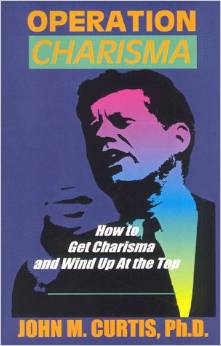In a strange déjà vu with Europe’s AstraZeneca vaccine, the Centers for Disease Control and Prevention [CDC] halted the Johnson & Johnson/Janssen Pharmaceuticals vaccine for creating blood clots or low platelets in at least six women under 50-year-old. When the AstraZeneca/Oxford vaccine created similar side effects, the European Medicines Agency [EMA] paused the vaccine March 15 before resuming its use March 18, only a three-day pause of weight out the risks v. the benefits of Europe’s most popular vaccine. It took only three days for the EMA to decide that whatever blood clots were produced from the AstraZeneca vaccine, they were within the statistical probability of error, meaning that the incidence of blood clots in vaccine recipients were about as likely as the normal population not receiving any vaccine. Whether the CDC concludes the same with Johnson & Johnson vaccine is anyone’s guess.
Any bad publicity over vaccine side effects, especially serious ones like blood clots, discourage vaccine recipients from getting vaccinated. Vaccine hesitancy has been a big problem for the EMA trying to ramp up vaccines in Europe’s 450 million population. Whether the blood clots from vaccine use are rare or not, it gives any reason to pause its use, knowing that there are alternatives on the market, including Pfizer’s and Moderna’s two shot mRNA vaccines. No serious side effects like blood clots or fainting spells have been reported with the Pfizer and Moderna vaccines. U.S. Food and Drug Administration [FDA] Commissioner Janet Woodcook expected the FDA’s pause to be a matter of days, not weeks, much like the U.K.’s AstraZeneca vaccine. Like the EMA, the FDA’s likely to conclude soon that the risk of blood clots is so infinitesimal that the benefits of the vaccine outweigh any possible side effects.
FDA official Peter Marks said there were very close parallels with AstraZeneca vaccine in terms of infrequent blood clots. EMA officials didn’t take long to realize the benefits to the vaccine far outweighed any possible side effects, including possible blood clots. Without knowing the benefits or the risks, the EMA urged vaccine recipients to receive one AstraZeneca adenovirus shot and one Pfizer or Moderna mRNA shot, even though there’s no research on the synergy or benefits of combining the two. Vaccine makers prefer that the EMA or FDA follow strict guidelines with respect to sticking to strict manufacturer protocols based on research. On thing’s for sure, the Pfizer and Moderna mRNA vaccines are the envy of the world, both in terms of safety and efficacy. AztraZeneca and Janssen/J&J vaccines are based on old vaccine technology using adenovirus from the common cold.
Reviewing data from new blood clot and low platelet incidents, the FDA and CDC won’t find much reason to suspend the J&J vaccine for two long. With about seven million single-dose shots given in the U.S. and only six known embolism and low platelets cases, the FDA and CDC are likely to give the green light soon to resume vaccines. “All Six cases occurred among women between 18 and 48, and symptoms occurred six to 13 days after vaccination,” said Dr. Anne Schuchat, principal deputy director of the CDC and Dr. Peter Marks, FDA director of Biological Evaluation and Research. Calling the blood clots Cerebral Venous Sinus Thrombosis [CVST], Schuchat and Marks recommended different types of blood thinners for treatment of CVST, mainly heparin. Whatever the treatment, cerebral CVST can be very serious, essentially the equivalent of a infarct stroke.
f
Speaking at the White House task force today, 80-year-old Dr. Anthony Fauci, NIH chief of Allergy and Infectious Disease, said the pause would be brief, a matter of days, not weeks or months to resume J&J vaccines. White House vaccine coordinator Jeffrey Zients said there are plenty of Pfizer and Moderna vaccines in the pipeline to vaccinate individuals scheduled for the J&J shots. “We want to get this worked out as quickly as we possibly can,” said Zients, emphasizing the extraordinary safety of tens-of-millions of vaccines given without adverse side effects. Marks emphasized that the CDC and FDA decision to pause the vaccines was only recommendations, allowing physicians to continue vaccinating with J&J if they see fit. “We are not going to stop a provider from administering the vaccine,” he said, letting the public know that the benefits still outweigh the risks.
Johnson & Johnson confirmed today that they were “aware of an extremely rare disorder involving people with blood clots in combination with low platelets in a small number of individuals who have received our Covid-19 vaccine.” That’s a much different response that AstraZeneca March 15, when they essentially said any blood clots or low platelets were no different that the unvaccinated population. J&J said it would “proactively delay the rollout of our vaccine in Europe,” pending more research. With over 6.8 million J&J shots given in the U.S., six cases of blood clots or low platelets represent an infinitesimal percentage relative to the number of vaccines given. CDC and FDA officials sees the J&J blood clots and low platelets the same way they evaluated the AstraZeneca vaccine March 15. It took three days for the EMA to resume vaccinations in the European Union.



